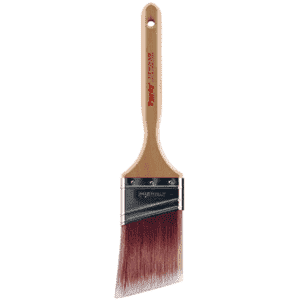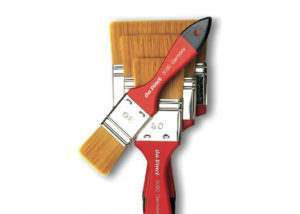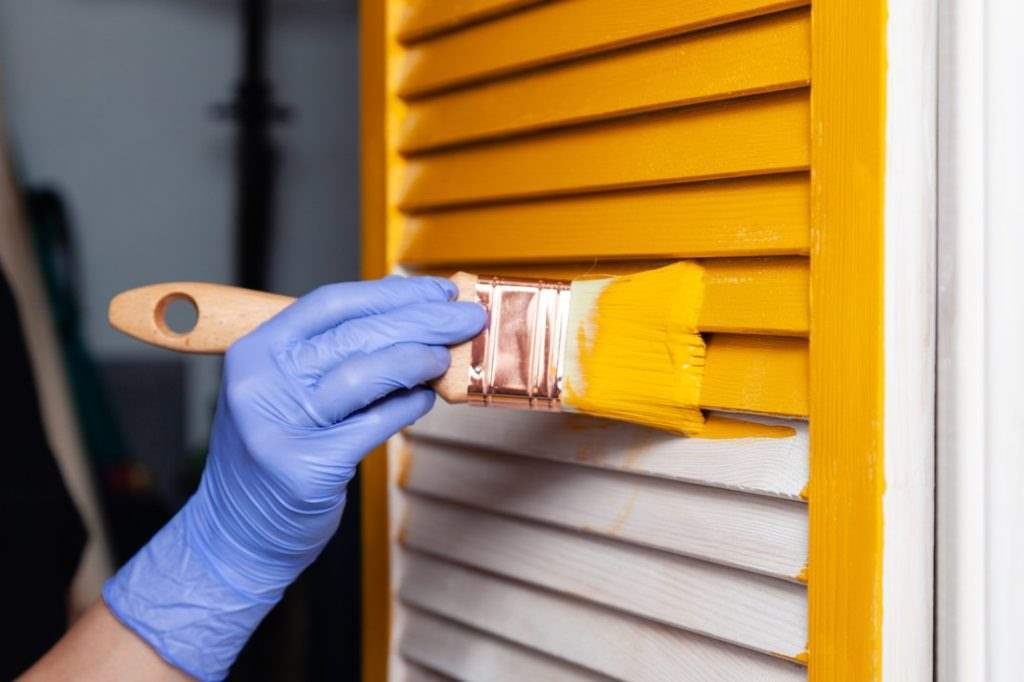We covered good ground in our last topic: “The best spray equipment to use for water based finishes.” Your responses were excellent!
Today, let’s answer the next obvious question: Can a water based finish be brush applied? Yes, they can!
It’s true: many water based formulas are engineered strictly for spray application. But others, like our EM2000wvx Waterborne Alkyd Varnish, are super “brush friendly,” meaning you can achieve the same beautiful finish with a brush.
Here are a few simple but important tips on brushing water based finishes to get the look you want:
1. Only use a synthetic bristle brush: This is the most important aspect of brushing a water based finish. A synthetic bristle filament made of nylon or polyester will maintain its strength and firmness when exposed to water. Natural fiber bristles such as horse hair, goat, badger and sable hair will lose their rigidity and backbone, becoming “moppy,” and will hold too much of the water based coating being used. It is important to select a synthetic fiber that has a medium length and is lightly flagged or split at the tip. The length of the bristle will control the amount of finish being pumped through the brush during the paint-stroke, and the flagged tip will disperse the coating without pumping too much air into the film as it is being laid-out.

2. Avoid excessive back-brushing: Back-brushing is the motion in which the loaded brush is worked back-and-forth over the surface being finished. Yes, the first layout of finish needs to be pulled back over itself to obtain the right wet film thickness, but overworking or back-brushing the coating as it is leveling may create air bubbles that could remain in the coating as it begins to set and form a film. The surface texture being finished has to be taken into consideration when determining how many times to back-brush, and the finishers eye and hand will dial-in the exact number of back-brush strokes to perform as the coating is being moved across the surface. Under most scenarios, the average brush stroke has two or three back-brushing motions and then the coating is tipped-off (more on “tipping” below).
3. Avoid over-tipping the set film: Tipping is just like it sounds – using the tip of the bristle filament to even off the brush stroke marks as the coating is beginning to form a level film. Many finishers and painters will tip-off the coat to remove air nubs, runs and sags. Do this with great care — otherwise you may leave tip marks in the film set.
4. Buy the best made bristle paint brush you can afford: Poorly made brushes, using uneven filament length made of stiff polyester are not going to make for a good final finish. Look for even length, width and depth of the brush design. A degree of bristle softness is also important. Stiff bristles are difficult to control when tipping-off the finish. Also, don’t ignore the ferrule and handle assembly of the brush being selected. The metal band that holds the brush filaments is called the ferrule, this is crimped to the handle, usually made of beech wood, and it should be securely tacked to the ferrule. Avoid a stapled ferrule – I look for a minimum of 3 tacks on each side of the ferrule to ensure a sturdy connection.

5. Keep your brushes clean: Seriously! Following my comments made about keeping your spray equipment clean, the same goes for your collection of brushes. Good brushes are not cheap and they need to be well cared for to ensure reliable use. Rinse your brush in clean, warm water as soon as you are done working with it – even if you plan on using it throughout the workday. Ensure that all of the water based finish is rinsed out of the heel of the bristle to prevent the coating from setting-up inside the filament pack. Use a hair comb to work out the rinse water and to straighten the fibers before you wring out the rest of the water. You should then follow up with a denatured alcohol and water rinse to ensure any finish residue is removed. Wrap the clean brush in a cloth or in the holder it was sold in. This will ensure the shape of the brush remains true. Finally – trim off any fly-away bristles. They are a real nuisance when performing detail work.
I have brushes of all sizes and types in my quiver – many of them are decades old. I like the way they improve with age and feel familiar in my hand. I baby them for as long as I can!
What are your best tips for (or questions about) brushing water based finishes? Please share your thoughts or read what others are saying below in the “comments” section.



Jeff, another well researched and written article by you. Thanks and keep them coming.
Pro-form makes a synthetic line of brushes called Picasso. They come in many widths ,are alittle pricey , but work well with your products. I have a couple that I always take on installs where I need to touch up.
Michael — Thank you for the Picasso brush recommendation. I’ll look into it. Have a set of high quality brushes in a wide array of sizes is key to a successful cabinet installation — touch-up brushes are mandatory!
-JW-
How about some instruction or a video on touching up a completed surface.
I recently delivered a piano finished with your EM6000. When I got to the venue after the install I saw a 6 inch scratch in the lid, courtesy of the move.
What’s my best option for filling in the gouge and perfecting the surface again?
thank you
Terry – Thank you for your post. Videos will be available in the near future.
-JW-
Hi Jeff did you end up having any videos on this? – Justine
Justine – Not yet. I’ll talk with Seth, our new Technical Support Rep about making one ASAP.
Do you have any video footage that you would like to submit for the topic?
-JW-